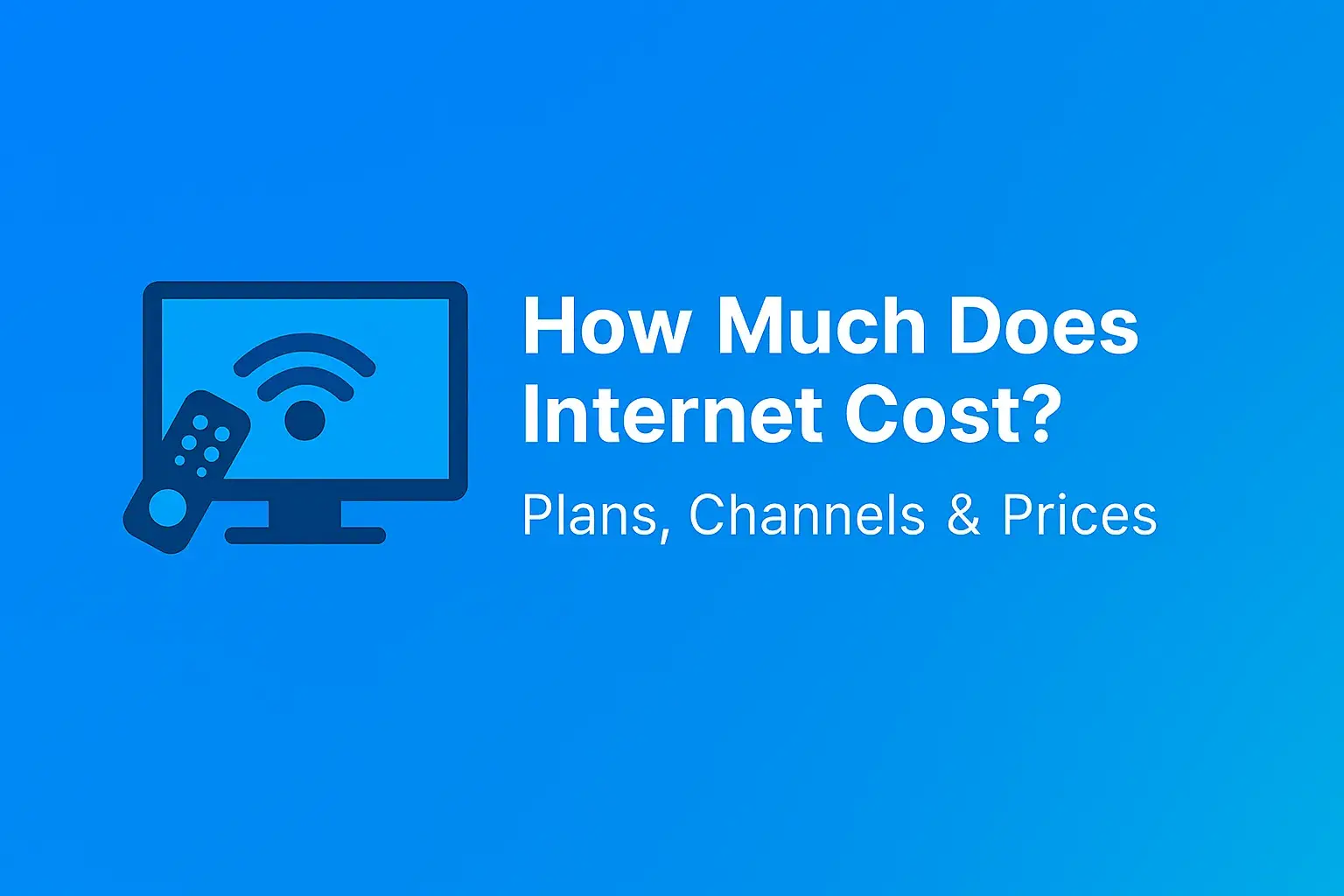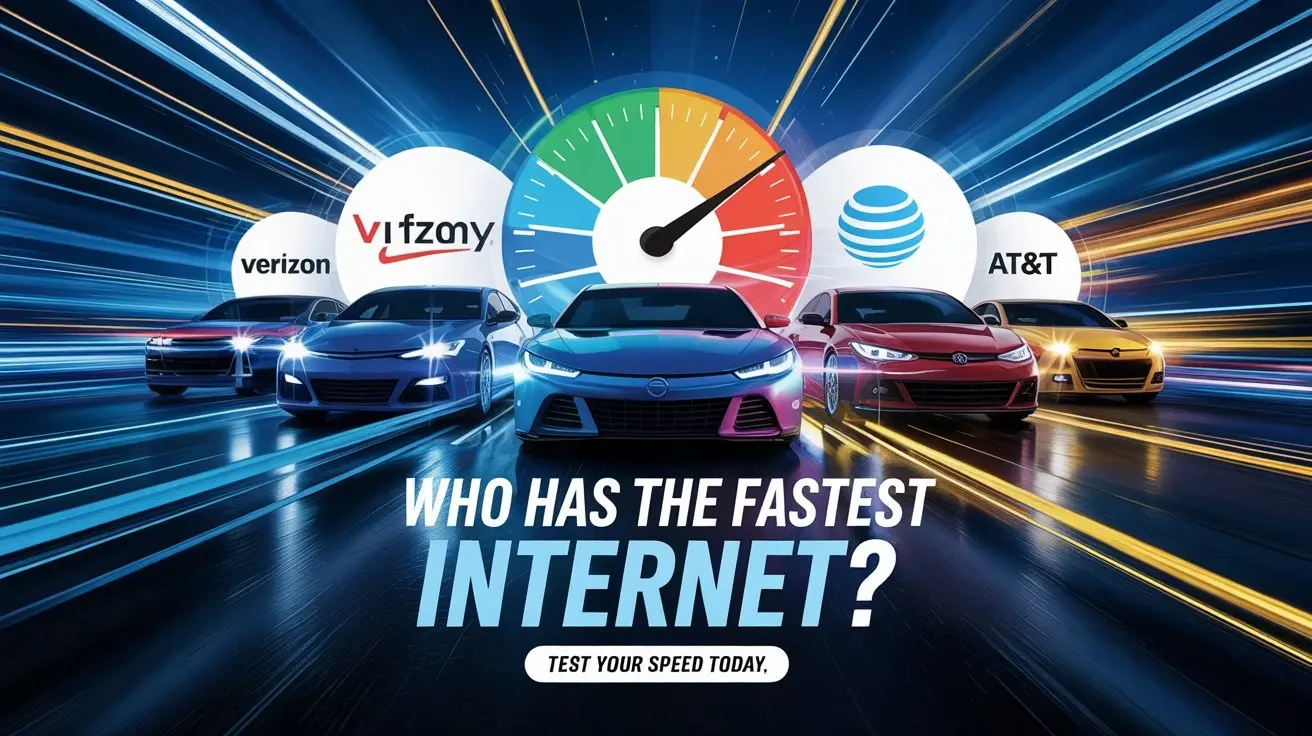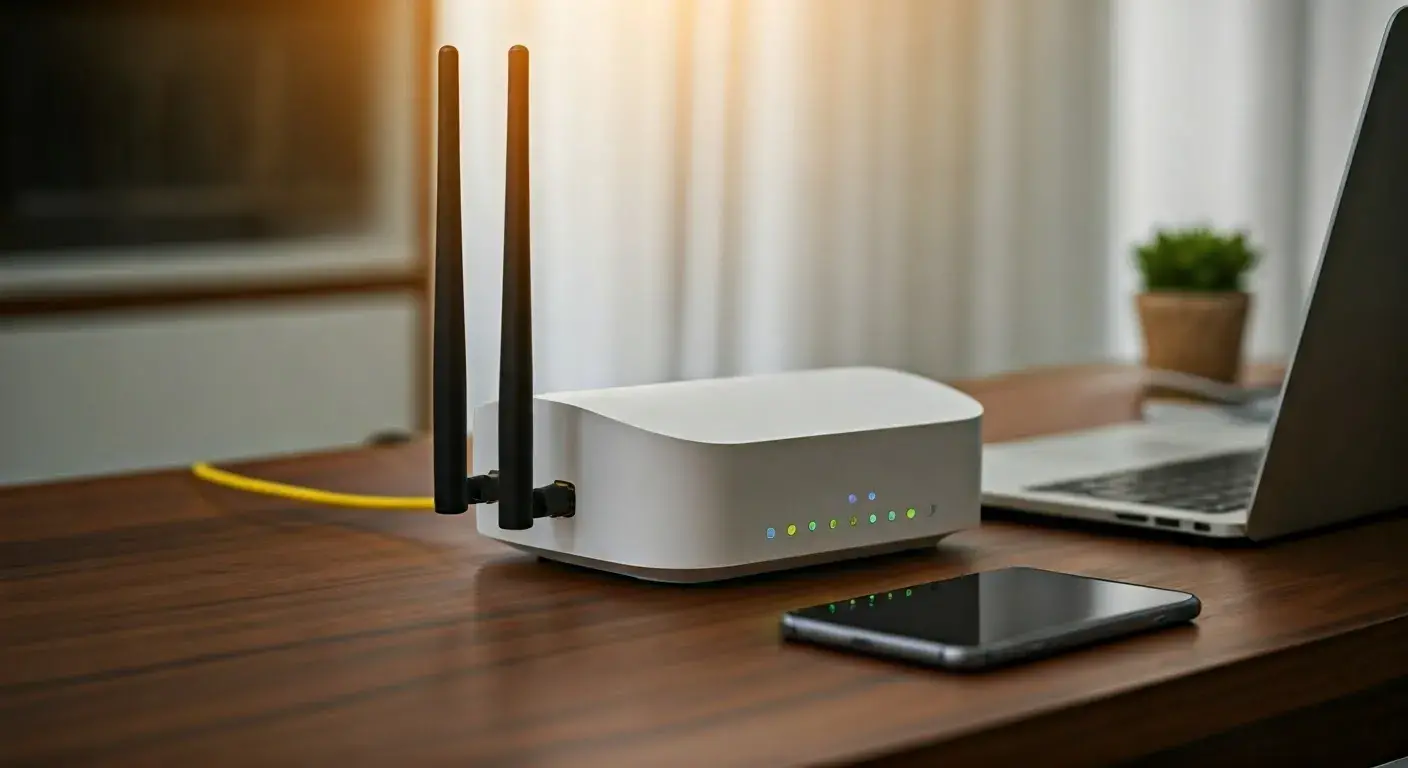What is the Average Person's Internet Speed?

Understanding the average internet speed is crucial for a smooth online experience, whether for work, entertainment, or staying connected. This guide dives into the current 2025 statistics, factors influencing speed, and what you can expect.
What is the Average Person's Internet Speed in 2025?
As of 2025, the global average internet download speed continues its upward trajectory, driven by advancements in infrastructure and increasing demand for bandwidth-intensive applications. While exact figures can fluctuate based on the reporting agency and methodology, most reputable sources place the global average download speed for fixed broadband connections somewhere between 100 Mbps and 150 Mbps. For mobile internet, the averages are typically lower but still significant, often ranging from 40 Mbps to 70 Mbps.
It's crucial to understand that "average" is a broad term. This figure represents a worldwide mean, encompassing a vast spectrum of speeds from high-speed fiber optic connections in urban centers to slower DSL or satellite services in more remote areas. Therefore, your personal internet speed might be considerably higher or lower than this global average. Factors such as your geographic location, the type of internet service you subscribe to, your internet service provider (ISP), and even the age and quality of your home networking equipment all play a pivotal role in determining your actual online experience.
This comprehensive guide will delve deeper into these influencing factors, explore the global landscape of internet speeds, help you understand how to measure your own speed, and provide insights into what speed is sufficient for your specific needs. We aim to provide a clear, up-to-date picture of internet speeds in 2025, empowering you to make informed decisions about your connectivity.
Factors Influencing Your Internet Speed
Several key elements contribute to the internet speed you experience at home or on your mobile device. Understanding these can help you diagnose issues and potentially improve your connection. These factors can be broadly categorized into external influences (related to your ISP and infrastructure) and internal influences (related to your home network and devices).
External Factors
1. Internet Service Provider (ISP) and Plan Tier
Your ISP is the primary gatekeeper of your internet speed. The plan you subscribe to directly dictates the maximum theoretical download and upload speeds you can achieve. ISPs offer various tiers, from basic plans suitable for light browsing to premium plans designed for heavy streaming, gaming, and multiple simultaneous users. It's essential to choose a plan that aligns with your usage habits. For instance, a plan advertised as "up to 100 Mbps" might, in reality, deliver less due to network congestion or other factors, but it sets an upper limit.
2. Type of Internet Connection
The underlying technology used to deliver internet to your home is a major determinant of speed. The most common types include:
- Fiber Optic: This is the fastest and most reliable type of internet connection, using light signals transmitted through glass or plastic fibers. Speeds can easily reach 1 Gbps (1000 Mbps) and beyond, both for downloads and uploads.
- Cable: Delivered via coaxial cables, cable internet is widely available and offers good speeds, often ranging from 50 Mbps to over 500 Mbps for downloads. Upload speeds are typically much lower than download speeds.
- DSL (Digital Subscriber Line): This technology uses existing telephone lines to transmit data. Speeds vary greatly depending on the distance from the telephone exchange, typically ranging from 5 Mbps to 100 Mbps for downloads. Upload speeds are very limited.
- Satellite: Best suited for rural or remote areas where other options are unavailable, satellite internet uses a dish to communicate with a satellite orbiting Earth. Speeds can be inconsistent and are generally slower than other options, often between 10 Mbps and 100 Mbps, with higher latency.
- 5G Home Internet: A newer offering that uses the 5G cellular network to provide home internet. Speeds can be very competitive, sometimes rivaling cable or even fiber, but are highly dependent on signal strength and network congestion.
3. Network Congestion
Similar to traffic on a highway, internet networks can become congested, especially during peak hours (typically evenings when many people are online). When too many users in your area are trying to access the internet simultaneously, your speeds can slow down. This is more common with shared infrastructure like cable networks.
4. Distance from the Exchange/Node
For DSL and, to some extent, cable connections, the physical distance between your home and the ISP's central office or local node can impact speed. The further away you are, the weaker the signal can become, leading to slower speeds.
5. Infrastructure Quality and Maintenance
The overall quality and maintenance of the ISP's network infrastructure, including the cables, routers, and other equipment, play a significant role. Outdated or poorly maintained infrastructure can lead to slower and less reliable service.
Internal Factors
1. Your Router
Your router is the device that broadcasts your Wi-Fi signal and connects your devices to the internet. An old or underpowered router can be a bottleneck, limiting the speeds your devices can achieve, even if your ISP plan is fast. The Wi-Fi standard (e.g., Wi-Fi 5, Wi-Fi 6) also impacts performance.
2. Wi-Fi Signal Strength and Interference
The strength of your Wi-Fi signal diminishes with distance from the router and is affected by physical obstructions like walls, floors, and even certain appliances (like microwaves). Interference from other Wi-Fi networks or electronic devices can also degrade signal quality and speed. Using a wired Ethernet connection directly to your router bypasses these Wi-Fi limitations.
3. Number of Connected Devices
Each device connected to your network consumes a portion of your available bandwidth. If you have many devices streaming, downloading, or gaming simultaneously, your overall speed will be divided among them, leading to slower performance for each individual device.
4. Device Capabilities
The capabilities of the devices you are using (computers, smartphones, tablets) also matter. Older devices may have network cards or processors that cannot handle the full speeds your internet plan offers. Similarly, the software and background processes running on your device can consume bandwidth.
5. Malware and Viruses
Malicious software on your devices can consume significant bandwidth by sending and receiving data without your knowledge, slowing down your internet connection for legitimate activities.
Global Internet Speed Landscape: A 2025 Snapshot
The internet speed landscape in 2025 is a tale of stark contrasts, with leading nations boasting lightning-fast fiber optic networks while others still grapple with slower, more basic connectivity. This disparity is influenced by a nation's economic development, investment in digital infrastructure, government policies, and the geographical distribution of its population.
According to data compiled from various reputable sources like Ookla (Speedtest.net), Cable.co.uk, and Statista, several countries consistently rank at the top for average fixed broadband download speeds. These leaders often exceed 200 Mbps, with some reaching well over 300 Mbps. Nations like Singapore, Hong Kong, South Korea, and several European countries, particularly those in Northern Europe, are frequently found at the forefront.
Top Tier Countries (Estimated Average Download Speeds in 2025):
- Singapore: Often leading the pack, with averages exceeding 250-300 Mbps, largely due to widespread fiber optic deployment.
- Hong Kong: Similar to Singapore, with robust fiber infrastructure pushing speeds over 250 Mbps.
- South Korea: A pioneer in high-speed internet, consistently offering speeds above 200 Mbps.
- European Nations (e.g., France, Spain, Denmark, Sweden): Many European countries have made significant investments in fiber, leading to average speeds often in the 150-250 Mbps range.
- United States: While the US has a wide range of speeds, the national average for fixed broadband in 2025 is estimated to be around 120-160 Mbps, with significant variations between urban and rural areas and different ISPs.
On the other end of the spectrum, some countries, particularly in parts of Africa, South America, and Asia, have average speeds that can be significantly lower, sometimes below 20 Mbps. These regions often rely on older technologies like ADSL or satellite, and infrastructure development is a major ongoing challenge.
Factors Contributing to Global Differences:
- Infrastructure Investment: Countries with high government and private sector investment in fiber optic networks tend to have the fastest speeds.
- Population Density: Densely populated urban areas are often easier and more cost-effective to wire with high-speed internet compared to vast rural or mountainous regions.
- Economic Development: Wealthier nations generally have more resources to invest in advanced telecommunications infrastructure.
- Competition: A competitive ISP market can drive innovation and encourage providers to offer faster speeds at more affordable prices.
- Geography: Island nations or countries with challenging terrain can face unique logistical hurdles in deploying high-speed internet.
When considering your own internet speed, it's helpful to compare it not just to a global average but also to averages within your own country or region, as this provides a more relevant benchmark for the services available to you.
Understanding Connection Types and Their Speeds
The type of internet connection you have is perhaps the most significant determinant of the speeds you can achieve. Each technology has its own characteristics, advantages, and limitations. Let's break down the common connection types and their typical speed ranges as observed in 2025.
Fiber Optic Internet
How it works: Fiber optic internet uses thin strands of glass or plastic to transmit data as pulses of light. This allows for incredibly high bandwidth and minimal signal degradation over long distances.
Typical Download Speeds: 100 Mbps to 2 Gbps (2000 Mbps) and even higher in some premium offerings. Many residential plans offer symmetrical speeds (same download and upload), such as 1 Gbps down and 1 Gbps up.
Typical Upload Speeds: Often symmetrical with download speeds.
Pros: Fastest speeds, lowest latency, highly reliable, not affected by distance from the provider's hub.
Cons: Availability is still limited, especially in rural areas; installation can sometimes be more complex.
Cable Internet
How it works: Cable internet utilizes the same coaxial cable network that delivers cable television. Data is transmitted using radio frequency signals.
Typical Download Speeds: 50 Mbps to 1 Gbps. Many common plans fall in the 100-300 Mbps range.
Typical Upload Speeds: Significantly lower than download speeds, often ranging from 5 Mbps to 50 Mbps.
Pros: Widely available, speeds are generally good for most households, competitive pricing.
Cons: Speeds can fluctuate due to network congestion (shared bandwidth), upload speeds are a bottleneck for some applications.
DSL Internet
How it works: DSL (Digital Subscriber Line) internet uses existing copper telephone lines to transmit data. It operates on frequencies that do not interfere with voice calls.
Typical Download Speeds: 5 Mbps to 100 Mbps. The actual speed is heavily dependent on the distance from the local telephone exchange.
Typical Upload Speeds: Very low, typically 1 Mbps to 10 Mbps.
Pros: Widely available due to existing phone lines, generally more affordable than other options.
Cons: Slowest of the mainstream wired technologies, speeds degrade significantly with distance, susceptible to interference.
Satellite Internet
How it works: Satellite internet involves a satellite dish at your home communicating with a satellite in orbit, which then relays data to a ground station connected to the internet backbone.
Typical Download Speeds: 25 Mbps to 100 Mbps. Some newer services are pushing higher, but latency remains an issue.
Typical Upload Speeds: 3 Mbps to 10 Mbps.
Pros: Available in virtually any location, including very remote areas.
Cons: High latency (delay) due to the distance the signal travels, speeds can be affected by weather, data caps are common, generally more expensive per Mbps.
5G Home Internet
How it works: This service uses the 5G cellular network to deliver internet to a modem/router in your home. It's essentially a wireless broadband connection.
Typical Download Speeds: Highly variable, ranging from 50 Mbps to over 1 Gbps, depending on signal strength, network congestion, and the specific 5G band being used.
Typical Upload Speeds: Generally lower than download speeds, but can be competitive.
Pros: Potentially very fast speeds, easy setup, no need for physical lines, can be a good alternative to cable or DSL in some areas.
Cons: Availability is still expanding, speeds can fluctuate significantly based on signal and network load, potential for data caps.
When evaluating your internet connection, identifying its type is the first step in understanding its capabilities and limitations. If you're consistently experiencing speeds far below what your ISP advertises, knowing your connection type can help you pinpoint whether the issue lies with the technology itself or other factors.
How to Measure Your Internet Speed Accurately
Knowing your actual internet speed is crucial for troubleshooting, comparing plans, and ensuring you're getting the service you pay for. Fortunately, measuring your internet speed is a straightforward process using online speed test tools. Here’s a step-by-step guide to getting accurate results:
Step 1: Prepare for the Speed Test
To ensure the most accurate results, follow these preparation steps:
- Close Unnecessary Applications: Shut down any applications on your computer or device that are using the internet, such as streaming services, cloud storage sync clients (Dropbox, Google Drive), video conferencing apps, and even browser tabs that might be downloading or uploading data in the background.
- Disconnect Other Devices: Temporarily disconnect other devices from your network that might be consuming bandwidth. This includes other computers, smartphones, tablets, smart TVs, game consoles, and smart home devices. The fewer devices actively using the internet, the more accurate the test will be for your primary device.
- Use a Wired Connection (Recommended): For the most accurate results, connect your computer directly to your router using an Ethernet cable. Wi-Fi speeds can be affected by signal strength, interference, and router capabilities, which can skew the test results. If a wired connection isn't possible, ensure your device is as close to the router as possible and minimize potential interference.
- Restart Your Modem and Router: Before running the test, power cycle your modem and router. Unplug both devices, wait for about 30 seconds, then plug the modem back in first. Wait for it to fully boot up (usually indicated by stable lights), then plug in your router. Wait for it to boot up completely before proceeding. This can clear temporary glitches and improve performance.
Step 2: Choose a Reliable Speed Test Tool
Several reputable online speed test providers offer free services. Some of the most popular and reliable include:
- Speedtest.net by Ookla: Widely considered the industry standard, it offers a user-friendly interface and a vast network of servers worldwide.
- Fast.com (by Netflix): This tool is optimized for testing streaming speeds and can be useful if your primary concern is video playback quality.
- Google Fiber Speed Test: A simple and effective tool, especially if you are in an area where Google Fiber is available, but it works for any connection.
- Your ISP's Speed Test: Many ISPs provide their own speed test tools on their websites. These can be useful for diagnosing issues specifically related to their network.
Step 3: Run the Speed Test
Once you've chosen a tool and prepared your setup:
- Navigate to the website of your chosen speed test provider.
- Click the "Go," "Start," or similar button to initiate the test.
- The test will typically measure three key metrics:
- Download Speed: The speed at which your device receives data from the internet. This is the most commonly discussed speed for general browsing, streaming, and downloading files.
- Upload Speed: The speed at which your device sends data to the internet. This is important for video calls, uploading large files, and online gaming.
- Ping (Latency): This measures the time it takes for a small packet of data to travel from your device to the test server and back. Lower ping times (measured in milliseconds, ms) are better, especially for real-time applications like online gaming and video conferencing.
- Wait for the test to complete. This usually takes between 30 seconds and a minute.
Step 4: Repeat the Test
For the most reliable assessment, run the speed test multiple times throughout the day (e.g., morning, afternoon, evening) and on different days. This helps you understand how your speed fluctuates due to network congestion or other variables. Compare the results to see a more representative average.
By following these steps, you can gain an accurate understanding of your internet performance and identify potential issues or areas for improvement.
Interpreting Your Speed Test Results: What Do the Numbers Mean?
Once you've run a speed test, you'll be presented with several numbers: download speed, upload speed, and ping. Understanding what these metrics signify is crucial for evaluating your internet experience.
Download Speed
What it is: This is the speed at which data travels from the internet to your device. It's measured in megabits per second (Mbps).
What it’s good for:
- Web Browsing: 5-10 Mbps is generally sufficient for basic web browsing.
- Standard Definition (SD) Streaming: Around 3-5 Mbps per stream.
- High Definition (HD) Streaming: 5-8 Mbps per stream.
- 4K Ultra HD Streaming: 25 Mbps or more per stream.
- Downloading Large Files: Higher speeds mean faster downloads. A 100 Mbps connection can download a 1 GB file in about 80 seconds, while a 1 Gbps connection can do it in about 8 seconds.
- Online Gaming (Downloading Games): Faster download speeds reduce the time it takes to download game updates or new titles.
Typical Ranges and What They Mean (2025):
- Below 25 Mbps: Likely to feel slow for most modern activities, especially streaming HD video or engaging in video calls.
- 25-50 Mbps: Adequate for single-user HD streaming, general browsing, and email. May struggle with multiple users or 4K streaming.
- 50-100 Mbps: Good for most households, supporting multiple HD streams, general browsing, and moderate online gaming.
- 100-300 Mbps: Excellent for most users, allowing for multiple 4K streams, heavy downloading, and smooth online gaming.
- 300 Mbps - 1 Gbps (1000 Mbps): High-performance speeds, ideal for power users, large households with many connected devices, and demanding applications like professional content creation or hosting.
- 1 Gbps and above: Cutting-edge speeds, offering near-instantaneous downloads and the ability to handle virtually any online task with ease.
Upload Speed
What it is: This is the speed at which data travels from your device to the internet. It's also measured in megabits per second (Mbps).
What it’s good for:
- Video Conferencing (e.g., Zoom, Teams): Higher upload speeds ensure clearer video and audio for participants. 5-10 Mbps is often recommended for good quality.
- Uploading Files: Crucial for backing up photos, videos, or documents to cloud storage, or for uploading content to platforms like YouTube or social media.
- Live Streaming: Essential for broadcasting live video content.
- Online Gaming (Sending Game Data): While download speed is important for receiving game data, upload speed is used to send your actions back to the game server.
- Working from Home: If your job involves frequent file uploads or video calls, good upload speed is vital.
Typical Ranges and What They Mean (2025):
- Below 5 Mbps: May cause issues with video calls and uploading files.
- 5-10 Mbps: Generally sufficient for good quality video calls and moderate file uploads.
- 10-25 Mbps: Excellent for most home users, supporting smooth video conferencing and faster uploads.
- 25 Mbps and above: Ideal for professionals, streamers, and anyone who frequently uploads large files or participates in high-quality video conferences. Symmetrical speeds (where upload equals download) are a significant advantage offered by fiber optic connections.
Ping (Latency)
What it is: Ping, or latency, measures the time delay in milliseconds (ms) for data to travel from your device to a server and back. It's a measure of responsiveness.
What it’s good for:
- Online Gaming: Low ping is critical for a responsive gaming experience. High ping causes lag, making it difficult to react in fast-paced games.
- Video Conferencing: Low ping reduces delays in conversations, making interactions feel more natural.
- VoIP Calls: Similar to video conferencing, low ping ensures clearer, more immediate voice communication.
- Real-time Applications: Any application that requires immediate feedback will benefit from low latency.
Typical Ranges and What They Mean (2025):
- Below 20 ms: Excellent, ideal for competitive online gaming and sensitive real-time applications.
- 20-50 ms: Very good, suitable for most online gaming and general real-time use.
- 50-100 ms: Acceptable for most online activities, but may introduce noticeable lag in fast-paced games.
- 100-150 ms: Noticeable lag can occur in gaming and video calls.
- Above 150 ms: Significant lag, making many real-time applications frustrating or unusable.
When comparing your speed test results to your ISP's advertised speeds, remember that advertised speeds are usually "up to" maximums. Your actual speeds will likely be lower due to various factors. However, if your speeds are consistently and significantly below the advertised rates, it may be time to contact your ISP.
What Internet Speed Do You Actually Need?
The question of "What is the average person's internet speed?" is less important than "What internet speed do I need?" Your ideal internet speed depends entirely on your household's internet usage habits. Here’s a breakdown to help you determine the right speed tier for your needs in 2025:
For Light Internet Users
Activities: Occasional web browsing, checking email, social media updates, very infrequent SD video streaming.
Recommended Speeds:
- Download: 10-25 Mbps
- Upload: 1-5 Mbps
- Ping: Under 100 ms
Consideration: These speeds are becoming less common as ISPs phase out very low-tier plans. If you fall into this category, you might still be on an older plan or using a less common connection type. Ensure your plan meets basic modern standards to avoid frustration.
For Moderate Internet Users
Activities: Regular web browsing, email, social media, streaming HD video (1-2 devices simultaneously), occasional video calls, online shopping, light online gaming.
Recommended Speeds:
- Download: 50-100 Mbps
- Upload: 5-10 Mbps
- Ping: Under 75 ms
Consideration: This is a good baseline for many households. It allows for comfortable HD streaming and general online activities without significant slowdowns, even with a couple of users online.
For Heavy Internet Users
Activities: Multiple users streaming HD or 4K video simultaneously, frequent video conferencing for work or school, online gaming (including downloading large games), significant cloud storage usage (uploading/downloading), working from home with demanding applications.
Recommended Speeds:
- Download: 100-300 Mbps
- Upload: 10-25 Mbps
- Ping: Under 50 ms
Consideration: This speed tier is suitable for families or households with multiple active internet users. It provides a buffer for simultaneous high-bandwidth activities.
For Power Users & Households with Many Devices
Activities: Households with numerous connected devices (smart home gadgets, multiple streaming devices, gaming consoles, work-from-home professionals), frequent 4K streaming, competitive online gaming, professional content creation (video editing, graphic design), hosting servers, using VR/AR applications.
Recommended Speeds:
- Download: 300 Mbps - 1 Gbps (1000 Mbps) or higher
- Upload: 25 Mbps - 1 Gbps (for symmetrical fiber)
- Ping: Under 30 ms
Consideration: If you have a large family, multiple gamers, or work in a field that requires high bandwidth and low latency, investing in a gigabit or near-gigabit plan (especially fiber) will provide the best experience. Symmetrical speeds are a significant advantage here.
Key Considerations When Choosing a Plan:
- Number of Users: More users mean more demand on bandwidth.
- Number of Devices: Each connected device, even smart home gadgets, uses some bandwidth.
- Primary Activities: Streaming, gaming, video calls, and large file transfers are the biggest bandwidth consumers.
- Upload vs. Download Needs: If you frequently upload large files or do a lot of video conferencing, prioritize upload speed.
- Latency Sensitivity: Gamers and those relying on real-time communication need low ping.
- ISP Advertised Speeds vs. Actual Speeds: Always check reviews and speed test data for your area, as advertised speeds are often theoretical maximums.
By honestly assessing your household's internet usage, you can move beyond the "average" and select a plan that truly meets your needs, ensuring a smooth and frustration-free online experience.
Troubleshooting Common Internet Speed Issues
Experiencing slow internet can be frustrating. Fortunately, many common speed issues can be resolved with simple troubleshooting steps. Here’s a guide to diagnosing and fixing common problems:
Issue 1: Slow Speeds Overall
Possible Causes:
- ISP plan is too low for your needs.
- Network congestion (ISP side or home Wi-Fi).
- Outdated or malfunctioning modem/router.
- Too many devices consuming bandwidth.
- Wi-Fi signal issues.
Solutions:
- Run a Speed Test: As detailed above, measure your current speeds.
- Check Your Plan: Compare your tested speeds to your ISP's advertised speeds for your plan. If they are consistently much lower, contact your ISP.
- Upgrade Your Plan: If your speeds are adequate but insufficient for your usage, consider upgrading your internet plan.
- Restart Modem/Router: Power cycle your equipment.
- Reduce Device Load: Temporarily disconnect devices to see if speed improves.
- Check Wi-Fi: Move closer to the router or use a wired connection to test.
- Upgrade Router: If your router is several years old, it might be a bottleneck. Consider upgrading to a newer Wi-Fi standard (e.g., Wi-Fi 6).
Issue 2: Slow Speeds on Wi-Fi Only
Possible Causes:
- Weak Wi-Fi signal (distance, obstructions).
- Wi-Fi interference from other networks or devices.
- Router placement.
- Outdated Wi-Fi technology on the router or device.
Solutions:
- Move Closer to Router: Test speeds near the router.
- Reposition Router: Place it in a central, open location, away from walls and electronics.
- Reduce Interference: Change your Wi-Fi channel in the router settings. Avoid placing the router near microwaves, cordless phones, or Bluetooth devices.
- Use 5GHz Band: If your router supports it, connect to the 5GHz band for potentially faster speeds (though shorter range) rather than the 2.4GHz band.
- Consider a Wi-Fi Extender or Mesh System: For larger homes, these can boost signal coverage.
- Update Router Firmware: Ensure your router's software is up to date.
Issue 3: Slow Speeds During Peak Hours (Evenings)
Possible Causes:
- Network congestion on your ISP's network.
- High number of devices in your home using the internet simultaneously.
Solutions:
- Test Speeds at Different Times: Compare evening speeds to off-peak times.
- Manage Bandwidth Usage: Schedule large downloads or updates for off-peak hours.
- Consider a Faster Plan: A higher-tier plan might offer better performance during congestion.
- Contact ISP: If congestion is a persistent problem in your area, your ISP may have solutions or be working on infrastructure upgrades.
Issue 4: High Ping (Latency)
Possible Causes:
- Distance to the server you're connecting to.
- Network congestion.
- Poorly optimized routing by your ISP.
- Wi-Fi interference or weak signal.
- Using a VPN.
Solutions:
- Use a Wired Connection: Ethernet is almost always better for latency than Wi-Fi.
- Test Different Speed Test Servers: Try servers geographically closer to you.
- Reduce Network Load: Ensure other devices aren't heavily using bandwidth.
- Disable VPN (Temporarily): If you use a VPN, test speeds with it off to see if it's the cause.
- Contact ISP: If high ping is persistent across all activities, your ISP may need to investigate routing issues.
Issue 5: Slow Upload Speeds
Possible Causes:
- Your internet plan has low upload speeds (common with cable and DSL).
- Too many devices uploading data simultaneously.
- Issues with the ISP's upstream network.
Solutions:
- Check Your Plan: Understand your plan's advertised upload speeds.
- Prioritize Upload Activities: If possible, limit simultaneous uploads.
- Consider Fiber Optic: If available, fiber offers symmetrical speeds and dramatically improves upload performance.
- Contact ISP: If upload speeds are significantly below advertised rates for your plan, contact your provider.
By systematically working through these troubleshooting steps, you can often identify the root cause of your slow internet speeds and implement the necessary solutions to improve your online experience.
The Future of Internet Speeds
The evolution of internet speeds is a continuous journey, driven by relentless innovation and the ever-increasing demands of digital life. Looking ahead, the trends suggest even faster, more responsive, and ubiquitous connectivity. Several key technologies and developments are shaping the future of internet speeds:
1. Widespread Fiber Optic Deployment
Fiber optic technology is the undisputed champion of current high-speed internet, and its expansion is set to accelerate. Governments and private companies worldwide are investing heavily in laying fiber optic cables deeper into communities, aiming to replace older copper and coaxial infrastructure. This will make multi-gigabit (1 Gbps to 10 Gbps and beyond) symmetrical speeds the new standard for many households and businesses, enabling seamless 8K streaming, advanced cloud computing, and immersive virtual/augmented reality experiences.
2. Advancements in 5G and Beyond (6G)
While 5G is still rolling out globally, research and development into 6G are already well underway. 5G home internet is proving to be a viable alternative to fixed-line broadband in many areas, offering competitive speeds and flexibility. Future iterations of 5G and the eventual emergence of 6G promise even higher speeds, lower latency, and greater capacity. 6G is expected to achieve theoretical peak speeds of up to 1 terabit per second (Tbps), with latency measured in microseconds, opening doors to applications we can only begin to imagine, such as truly holographic communication and hyper-realistic digital twins.
3. Next-Generation Wi-Fi Standards
Wi-Fi technology within our homes and offices is also evolving. While Wi-Fi 6 (802.11ax) is becoming mainstream, Wi-Fi 7 (802.11be) is on the horizon, promising significant improvements in speed, capacity, and efficiency. Wi-Fi 7 will leverage wider channels, more advanced modulation techniques, and multi-link operation to deliver speeds that can better utilize multi-gigabit internet connections, reduce interference, and improve the performance of connected devices, especially in congested environments.
4. AI and Machine Learning in Network Management
Artificial intelligence (AI) and machine learning (ML) are playing an increasingly vital role in optimizing network performance. AI algorithms can predict traffic patterns, dynamically allocate bandwidth, detect and resolve network issues proactively, and enhance cybersecurity. This intelligent network management will be crucial for handling the complexity and sheer volume of data in the future, ensuring that even with exponentially increasing speeds, networks remain stable and efficient.
5. Edge Computing and Decentralized Networks
As the Internet of Things (IoT) continues to grow and applications demand near-instantaneous responses, edge computing is becoming more important. This involves processing data closer to the source of generation, rather than sending it all to distant data centers. This reduces latency and bandwidth requirements on the core network. Decentralized network architectures may also emerge, distributing network resources more broadly and potentially leading to more resilient and faster connections.
Challenges Ahead
Despite the exciting technological advancements, challenges remain. The cost of deploying new infrastructure, particularly fiber optics in rural or difficult terrain, is substantial. Bridging the digital divide to ensure equitable access to high-speed internet globally is a significant undertaking. Furthermore, cybersecurity threats will continue to evolve, requiring constant vigilance and innovation to protect increasingly complex and interconnected networks.
In conclusion, the future of internet speeds is bright, pointing towards a world where connectivity is faster, more reliable, and more integrated into our lives than ever before. The average person's internet speed will continue to climb, pushing the boundaries of what's possible in communication, entertainment, and innovation.
Conclusion
In 2025, the average person's internet speed for fixed broadband hovers between 100-150 Mbps globally, with mobile speeds considerably lower. However, this average masks a vast disparity influenced by geographic location, ISP, connection type (fiber, cable, DSL, satellite, 5G), and home network setup. Understanding these factors is key to assessing your own connectivity. We've explored how factors like your ISP plan, network congestion, router quality, and even the number of devices in your home directly impact your online experience. Globally, nations like Singapore and South Korea lead with speeds exceeding 250 Mbps, while others lag behind, highlighting the ongoing challenge of digital infrastructure development.
We've detailed how to accurately measure your internet speed using reliable tools and interpret the results—download, upload, and ping—to understand what they mean for your daily activities, from streaming 4K video to engaging in competitive online gaming. Crucially, we've outlined what speeds you actually need, moving beyond the average to provide tailored recommendations for light, moderate, heavy, and power users, emphasizing that your individual requirements dictate the ideal plan. Finally, we've equipped you with troubleshooting steps for common speed issues and offered a glimpse into the future, where multi-gigabit fiber, advanced 5G/6G, and AI-driven networks promise even faster and more seamless connectivity.
Your actionable takeaway: Don't settle for speeds that hinder your online activities. Regularly test your internet speed, compare it to your plan's advertised rates, and assess if it meets your household's current needs. If your speeds are consistently low or insufficient, explore upgrading your plan, optimizing your home network, or switching to a better-suited connection type. Investing in appropriate internet speed is an investment in your productivity, entertainment, and overall digital well-being in our increasingly connected world.





